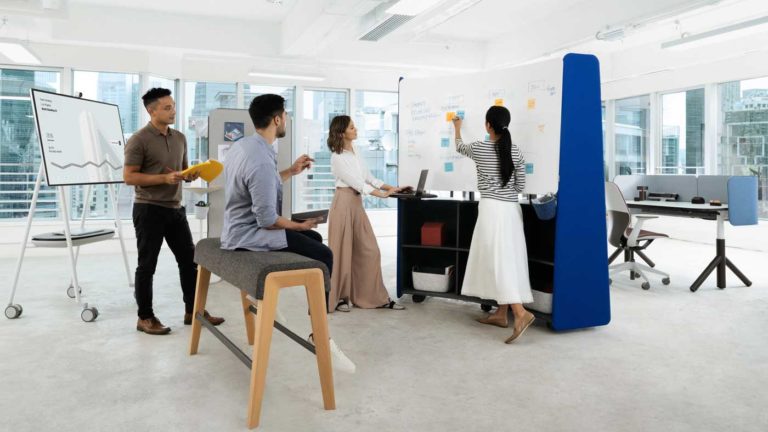This webinar is Part 3 of a three-part series.
Learn from industry experts about the future of our workplaces and how to simply and practically follow the guidelines to adapt and reopen your office, regardless of your company’s size, budget, and resources.
Specially prepared for small business owners with smaller offices, this webinar series looks at the current state of the workplace after the past year, positioning this disruption as an opportunity to rethink the workplace by taking what we’ve learned to create more flexible, diverse, and distributed workplaces and company cultures. Using clean, simple graphics to show examples of how small offices can adapt to the future of work while complying with current guidelines, these webinars will present a range of different options and techniques that align with different company cultures and budgets.
The schedule for the series is as follows:
Part 1 – The Big Picture: April 27, 5:30 PM – 6:30 PM EDT
Part 2 – Back to the Office…The Near and Now: May 4, 5:30 PM – 6:30 PM EDT
Part 3 – The Future of Offices: May 11, 5:30 PM – 6:30 PM EDT
Part 3 – The Future of Offices
This third and final webinar of the series focuses on the future of our offices and workplaces, including what they could look like after herd immunity is achieved. The range of case studies presented will show simple and practical strategies to make our future offices more flexible, resilient, and healthy while meeting the needs of the company and individual employees. The strategies presented will focus on longer term projects where offices are fully renovated or newly built out to accommodate a variety of working styles through different work environments and amenities that engage and activate the office, employees, and community.
Topics covered include:
- Roadmap and decision tree for renovating your office or building out a new one
- Case studies showing simple and practical strategies for flexible, resilient, and healthy offices, which also highlight helpful technologies and ways to improve ventilation and HVAC systems. Case studies include:
- Typical office with 40 employees
- 12-person shared office with four different companies
- 5-person open plan office
- The above-noted case studies will discuss strategies about:
- Different human needs and work styles
- Flexibility
- Amenities
- Community activation and collaborations
- How to make offices interesting and engaging for everyone
These webinars have been prepared by architects, interior designers, and engineers who are members of the AIANY-NYS Unified Crisis Task Force.
